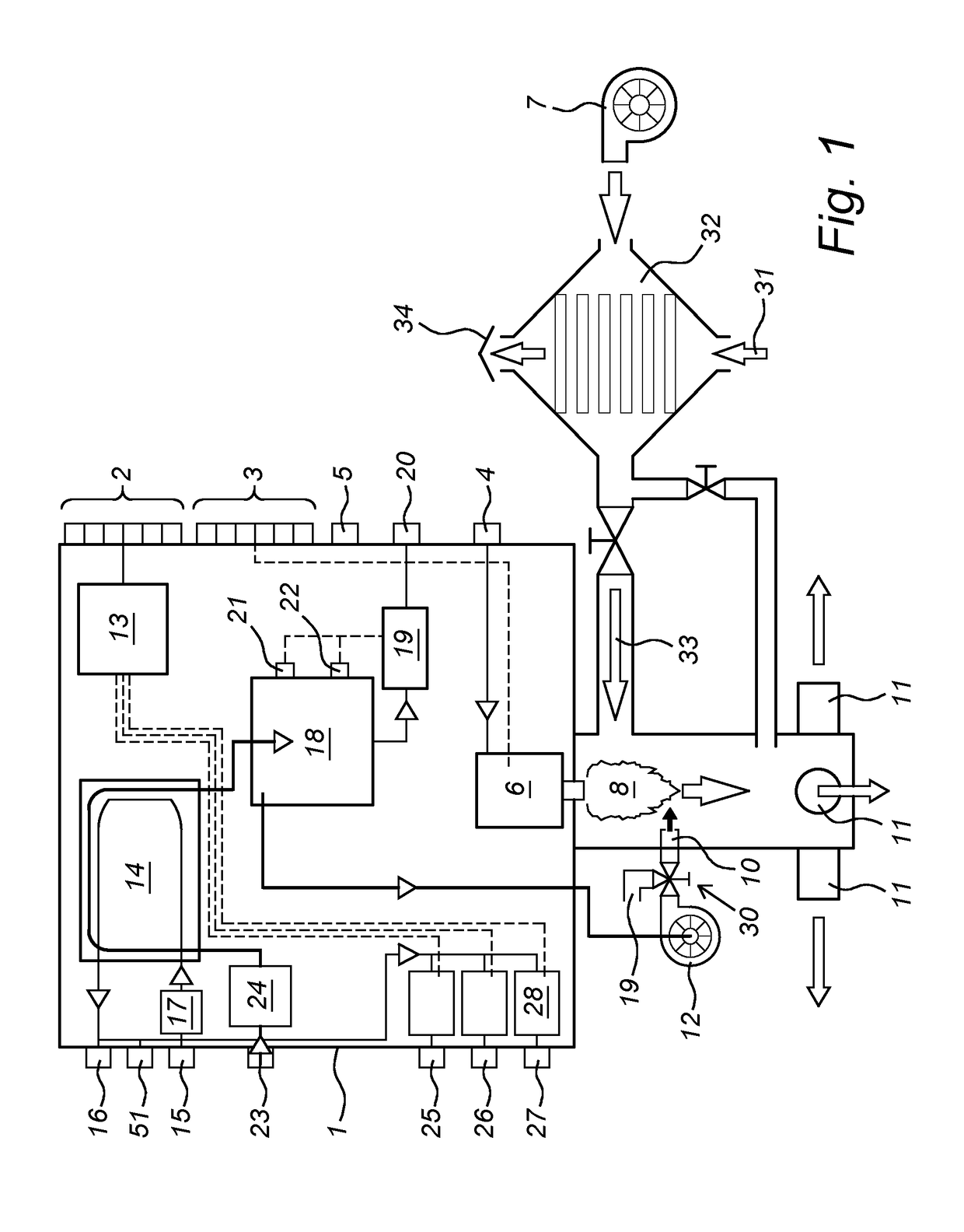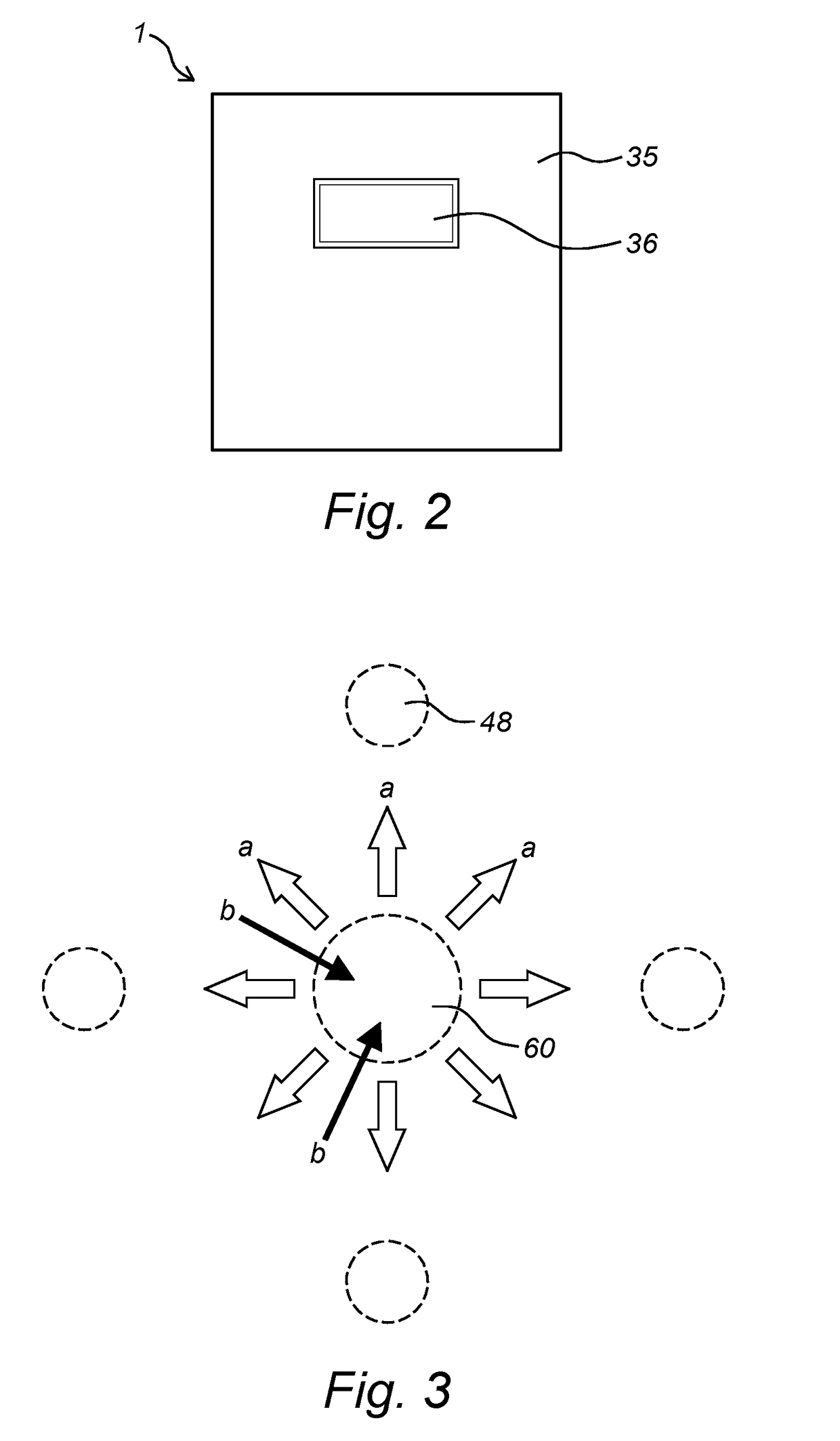Device, system and process for treating porous materials
a technology of porous materials and devices, applied in the field of devices, systems and processes for treating porous materials, can solve the problems of large energy consumption of processes, waste of important part of energy, and contaminated soils, and achieve the effect of reducing the amount of water required and reducing the overall treatment tim
- Summary
- Abstract
- Description
- Claims
- Application Information
AI Technical Summary
Benefits of technology
Problems solved by technology
Method used
Image
Examples
Embodiment Construction
[0042]The invention relates to a system, a device, and a process for treating and decontaminating soils by thermal treatment and water vapor injection.
[0043]The system and the process allow for an increase in temperature of a contaminated soil or contaminated material thanks to the forced circulation of a heat-transfer fluid, such as water vapor, in order to displace and extract pollutants.
[0044]In the method and the system of the invention, the water vapor is created in the soil to be treated. Thus, the method and system of the invention are deprived of above-ground installation in which high-pressure vapor is circulated. This allows for a simplification of the process and setup required for the treatment.
[0045]The word “approximately” as used herein refers to a measurable value, such as a parameter, a quantity, or a time interval. The word “approximately” covers variations of + / −25% or less, preferably + / −10% or less, more preferably + / −5% or less, even more preferably + / −1% or le...
PUM
 Login to View More
Login to View More Abstract
Description
Claims
Application Information
 Login to View More
Login to View More - R&D
- Intellectual Property
- Life Sciences
- Materials
- Tech Scout
- Unparalleled Data Quality
- Higher Quality Content
- 60% Fewer Hallucinations
Browse by: Latest US Patents, China's latest patents, Technical Efficacy Thesaurus, Application Domain, Technology Topic, Popular Technical Reports.
© 2025 PatSnap. All rights reserved.Legal|Privacy policy|Modern Slavery Act Transparency Statement|Sitemap|About US| Contact US: help@patsnap.com



